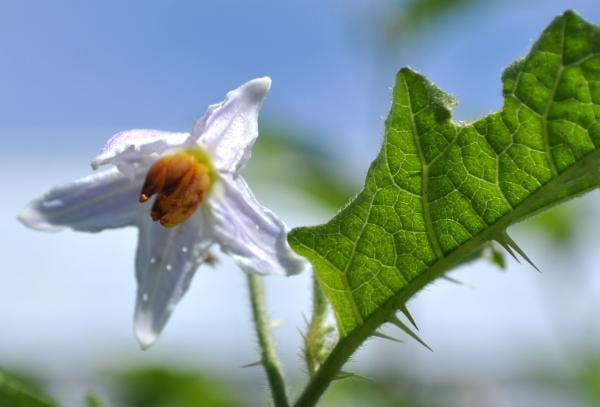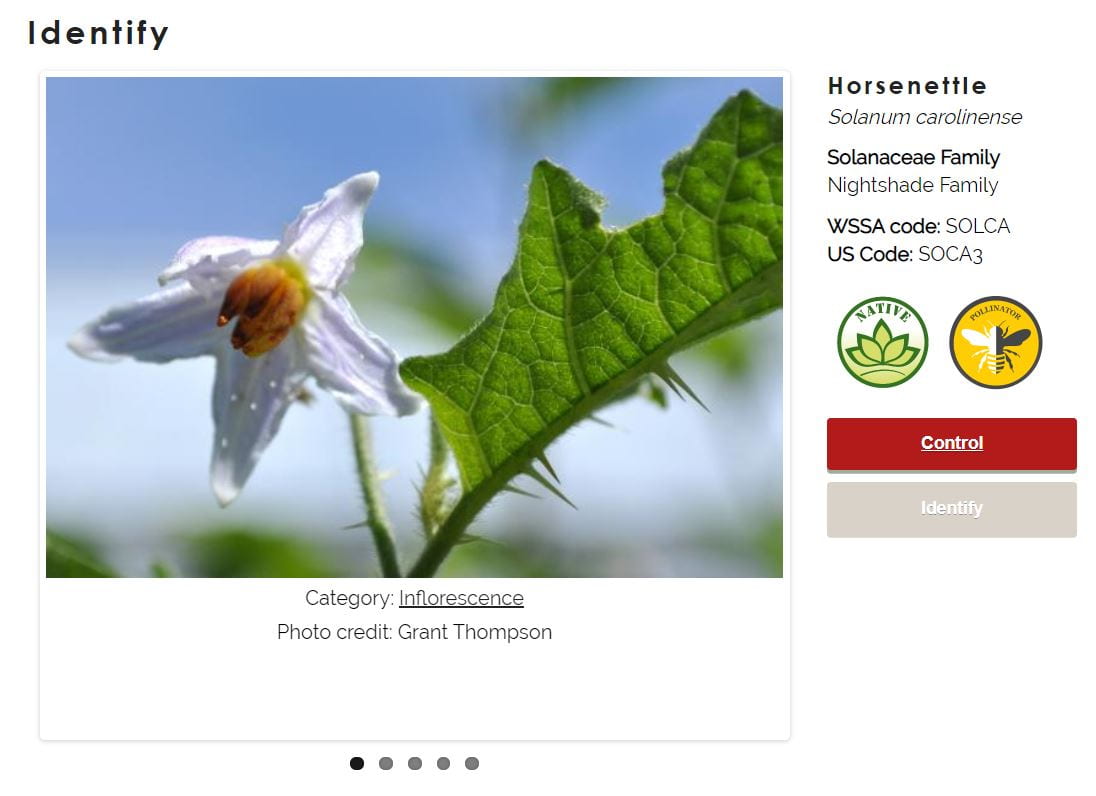Horsenettle (Solanum carolinense) is a weed that is native to southeastern United States and has spread to the eastern and north-central states and into southern Canada, as well as west to Texas. It is a common weed in tilled and reduced-tillage crops such as corn and small grains, and is particularly difficult to manage in solanaceous crops including tomato and potato. Horsenettle may emerge on a wide range of soil types.
Toxicity
Horsenettle contains tropane alkaloids (specially solanine) that impact the autonomic nervous system and the oral/gastric lining. The entirety of the plant is toxic, unripe fruits are especially high in toxicity. Levels of toxicity can be reduced by drying. Symptoms of poisoning include colic, diarrhea, weakness, muscle tremors, difficulty breathing, depression, and in more extreme cases kidney failure, coma, and death. Animals affected include horses, cattle, sheep, goats, and pigs. Generally, horsenettle poisoning is rare due to it low palatability from its poor taste and spines. However, poisoning is still possible especially if available forage is limited.
Identification
Seedlings: Cotyledons are 1.2 cm (~1/2”) long and oval to oblong. They have glossy green surfaces and light green undersides. Leaves of the seedlings are alternate and the first 2 contain scattered star-shaped hairs on the upper surface while the other leaves are wavy or lobed, and hairy on the upper and bottom surfaces. The purplish stems of the young plant also have short and stiff hairs.
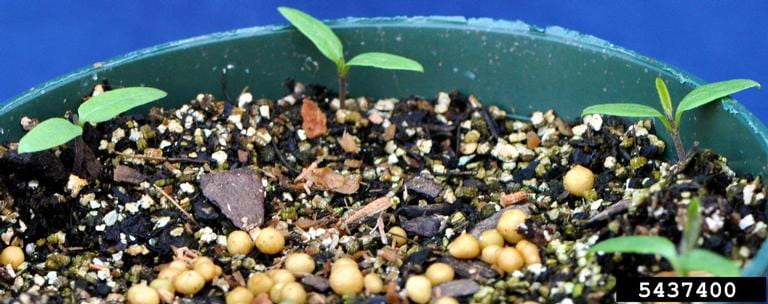
Horsenettle seedlings
photo by Bruce Ackley via The Ohio State University, Bugwood.org
Leaves: Like the stems, both surfaces of the leaves also have star-shaped hairs. The leaves alternate, are egg-shaped, and are 7-12 cm (~2-5”) long and approximately half as wide. Sharp prickles are apparent on the veins, midrib, and petioles. The leaves also have wavy or 2-5 shallow lobes on the margins.
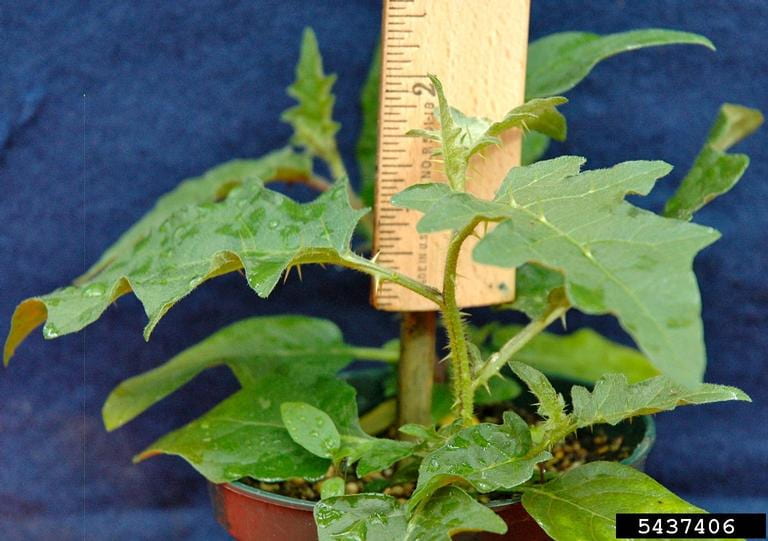
Horsenettle mature leaves
photo by Bruce Ackley from the Ohio State University via invasive.org
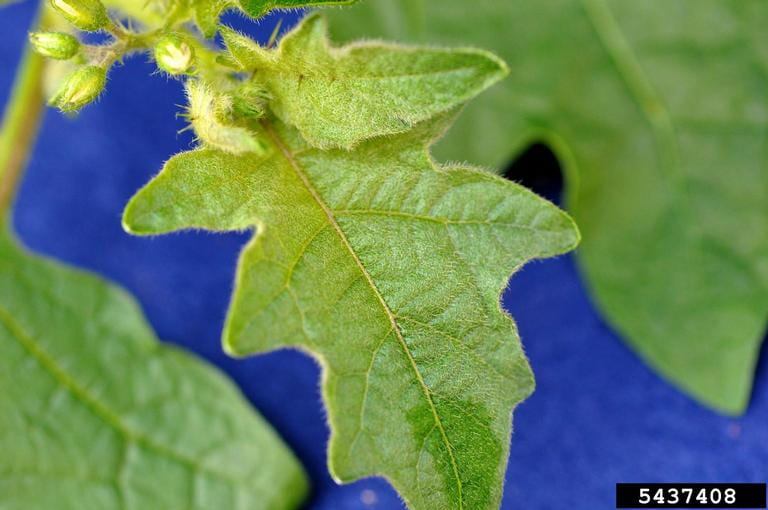
Close-up of mature horsenettle leaf
photo by Bruce Ackley from the Ohio State University via invasive.org
Mature plants: Stems of the mature plant are covered in star-shaped hairs and erect with sharp, yellowish or white prickles (6-12 mm long (~2-5”)). The stems are also angled at the nodes, somewhat branched, and 0.3-1.2 m (1 to 4 ft) tall.
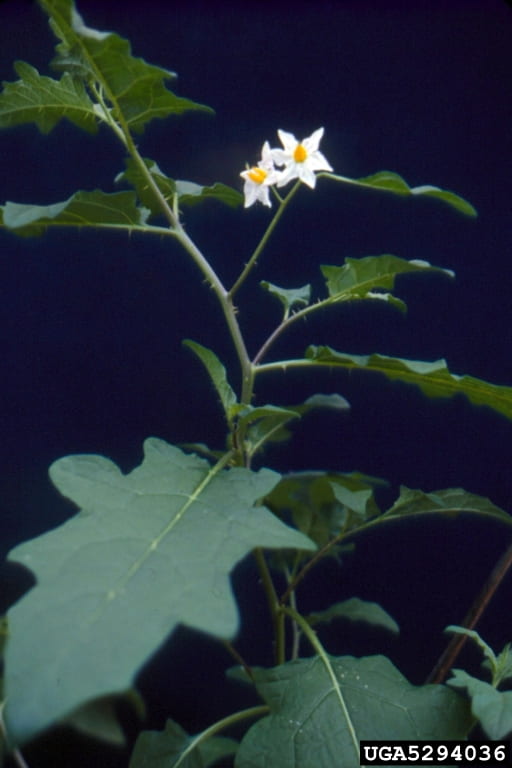
Mature Horsenettle plant
photo by Florida Division of Plant Industry via Florida Department of Agriculture and Consumer Services, Bugwood.org
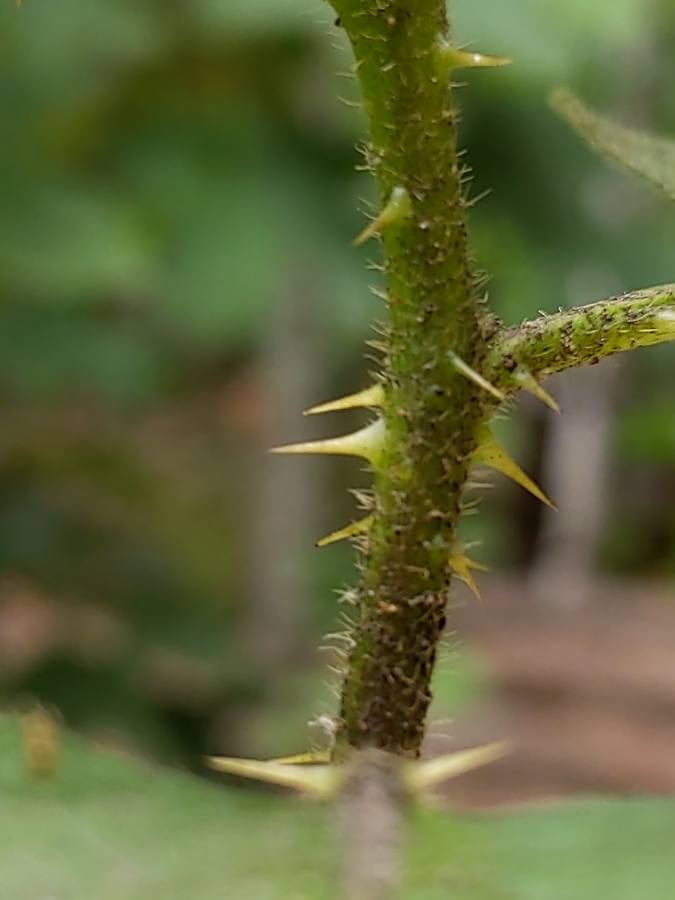
Pricks on the stems of horsenettle plants
photo by user Brucewinter from wikipedia
Flowers/Fruits: Flowers develop in clusters as early as June. The flowers, 2 cm (4/5”) in diameter, include 5 white to violet flower petals. There are 5 stamens (long structures in the center of the flower) with bright yellow anthers (at the end of the stamens).
Fruit of the horsenettle are smooth berries (1-1.5 cm (~1/2”) in diameter) that turn from green to yellow during maturation and contain 40-170 seeds inside. The smooth seeds are round, flattened, and glossy with an orange or light yellow color. Towards the end of the season, the berries become wrinkled.
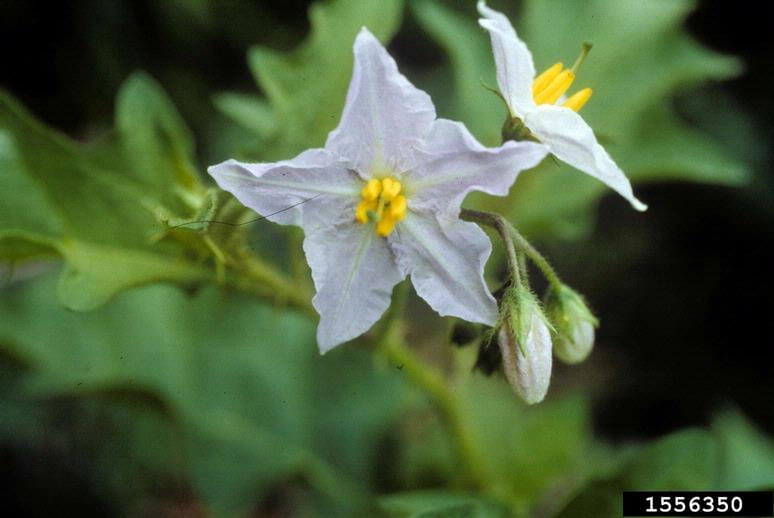
Horsenettle flower
photo by Ohio State Weed Lab via The Ohio State University, Bugwood.org
Management
Chemical control
Click above for the chemical control of Horsenettle from the Cornell Weed ID site
Use this tool to look up the efficacy of herbicides on a particular weed species. For general guidance on weed control, get the latest edition of the Cornell Crop and Pest Management Guidelines.
Non-chemical control
For management of the horsenettle, an effective form of management is summer tillage. On grain farms, allow the plants to resprout and till again before planting the winter grain or fall crop cover. This method will help to reduce the thick coverage of the weed in the area. Repeated tillage at times when the horsenettle weed is most sensitive to disturbance is convenient to conduct on vegetable farms due to the short season crops. When spring-planted, full-season crops are the case and tillage is made difficult, switch to the method of cultivating deeper underground. In cases which horsenettle is not yet well established in a field, the weed can be eliminated within a couple of years by repeatedly hoeing in the row in addition to cultivation. Considering horsenettle is slow to re-sprout, only a few sessions of hoeing per season is necessary.
See A Grower’s Guide to Organic Apples from Cornell for non-chemical weed control options in apple orchards.
References
Breth, D I and E Tee. 2016. Herbicide AI by Weed Species. This tool allows you to look up the efficacy of an herbicide active ingredient on a particular weed species.
Colorado State University Guide to Poisonous Plants: Horse nettle
Cornell University’s Turfgrass and Landscape Weed ID app. Identification and control options for weeds common to turf, agriculture, and gardens in New York; uses a very simple decision tree to identify your weed.
Organic management suggestions are from Dr. Charles Mohler of Cornell University. Look for an upcoming book from Dr. Mohler on ecological management of weeds, from Cornell University Press.
Peck, G M and I A Merwin. A Grower’s Guide to Organic Apples. Covers organic weed control methods for organic apple orchards.
Rhodes N G, Phillips W P. 2011. Pasture Weed Fact Sheet: Horsenettle. The Univerity of Tenessee Extension
Uva R H, Neal J C, DiTomaso J M. 1997. Weeds of the Northeast. Book published by Cornell University, Ithaca NY. The go-to for weed ID in the Northeast; look for a new edition sometime in 2019.

